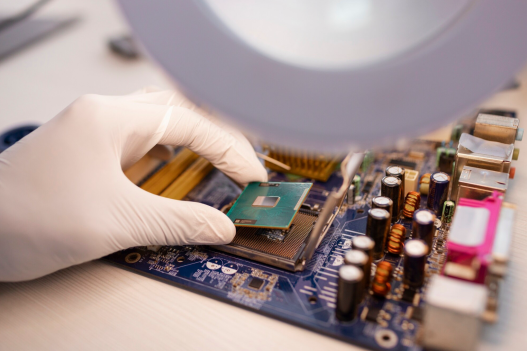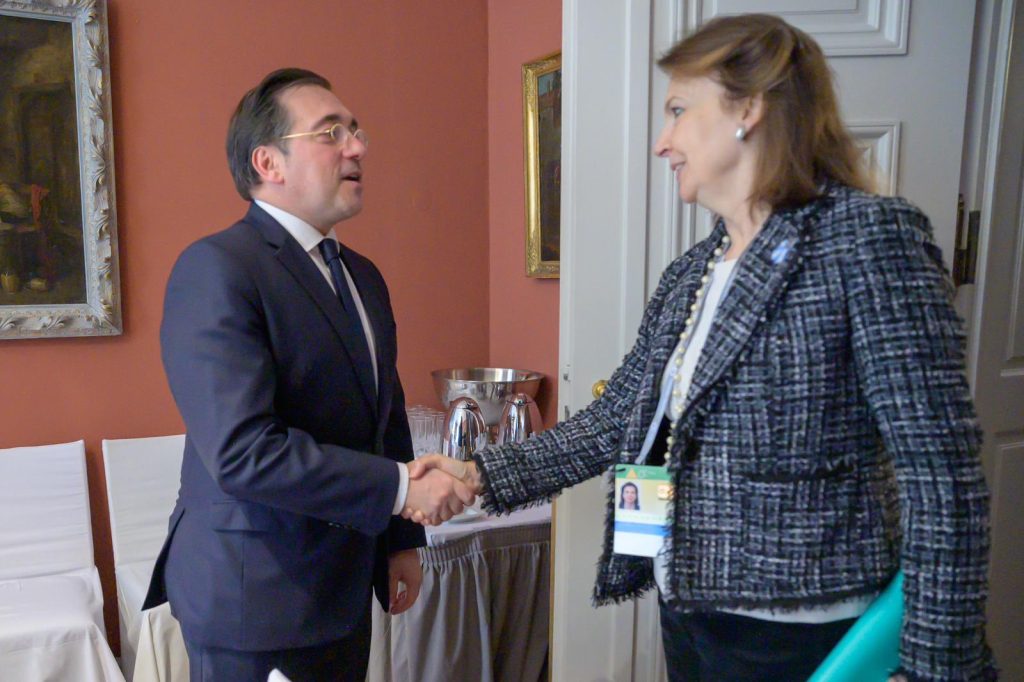
INDIA PREPARES TO COMPETE WITH CHINA AS THE 'FACTORY OF THE WORLD'
By Pedro Fernaud / Escudo digital
India is known on a planetary scale for its cultural diversity, which is reflected in its festivals and millenary traditions. It is also the place where yoga and ancient spiritual practices such as Ayurveda were created, bringing harmony and well-being to the millions of people who practice them. However, that look to the past does not neglect an active approach to what is to come, and good proof of them is Make in India, an ambitious initiative of the Indian government that promotes domestic manufacturing and production to boost economic growth.
Launched in 2014, this initiative seeks to attract foreign investment and encourage job creation by improving the business environment. The program focuses on key sectors such as manufacturing, infrastructure and technology, with the aim of strengthening India’s position as a global manufacturing hub, a position in which it wants to emerge as a serious competitor to China as a ‘global factory’, a strand in which Indian capabilities in digitization and the semiconductor field, as well as the high scientific qualification of its workers, the high command of English (the country’s official language along with Hindi) and the competitive salaries of its workforce make it a very attractive destination for large technology companies, such as Google and Microsoft, to set up important production centers there.
India can also play a very important role as an alternative hub to Taiwan, which is under permanent threat of a possible Chinese invasion, as the world’s leading manufacturer of semiconductors. In short, through policies and reforms, Make in India aims to transform the country into a favorable destination for industrial production and development.
KEYS TO INDIA’S ECONOMIC DEVELOPMENT IN THE 20TH AND 21ST CENTURIES
It is useful to contextualize the country’s economic development over the past and current century in order to understand the backbone of the socioeconomic roots on which the Make in India plan is being built.
Throughout the 20th century, India underwent remarkable economic changes. During the 1950s and 1960s, Jawaharlal Nehru implemented the Five-Year Plan for Economic Development, which sought to industrialize the country through public ownership. In 1991, liberalization, privatization and globalization (LPG) reforms led by Narasimha Rao and Manmohan Singh opened the economy to the global market. In this context, Indira Gandhi played a crucial role in poverty reduction through the Community Development Program. In recent decades India has consolidated its position as one of the fastest growing economies under the government leadership of Atal Bihari Vajpayee and Narendra Modi. Initiatives such as Make in India and Digital India have diversified and stimulated economic growth, addressing persistent challenges in this giant nation such as inequality and poverty.
THE DAY INDIA ‘SWIPED’ THE STATUS OF THE WORLD’S MOST POPULOUS COUNTRY FROM CHINA
We are also talking about the most populous country in the world, a status it has held since April 24, 2023, when India overtook China as the country with the largest demographic capital. A distance that is gradually becoming more evident. According to figures provided by the World Population Review, in July 2023 India surpassed China’s population by three million. Experts estimate that the Chinese population will decrease steadily in the coming decades, until it reaches 800 million inhabitants by the end of the 21st century (at present, the Asian Giant is home to 1,411,750,000 people). Meanwhile, India will reach 1.7 billion inhabitants by 2060 and will close the century with some 1.5 billion inhabitants. In other words: by the end of the 21st century, India’s population will almost double that of China, as VisualPolitiks points out.
For China, this demographic weakening in the short and medium term represents a formidable challenge, which, among other measures, has provoked the president of the Asian titan, Xi Jinping, to urge the women of his nation to increase their birth rates, as we explained in Escudo Digital in a report in which the keys to what would represent a demographic winter for this nation, as well as the tricks that China is playing to redirect this trend, are sized. The challenge we are talking about is colossal. One fact illustrates the direction: in 2050 there will be 700 million workers in China, which is 200 million fewer than the number of people working in 2011. To make matters worse, the 700 million active Chinese workers in 2050 will have to generate resources to pay the pensions of the 500 million Chinese citizens over the age of 60, which means 300 million more people in that age bracket than there are today in that generational range.
MAKE IN INDIA: A DRIVER OF INDIA’S EXPONENTIAL DEVELOPMENT
The Make in India program has been instrumental in boosting manufacturing and attracting foreign direct investment to the country. Narendra Modi’s ambitious plan proposes to modernize the country by building infrastructure, eliminating bureaucratic hurdles and creating a better business environment based on clear rules and greater transparency.
According to experts, this initiative has contributed significantly to economic growth by facilitating a friendlier business environment, simplifying bureaucratic processes and promoting job creation. In addition, it has focused on key sectors such as technology, automotive, electronics and infrastructure, seeking to turn India into a global production center, something like the new big factory on a global scale, a condition with which it wants to rival China.lg.php.gif
A very illustrative example of India’s production potential can be found in the semiconductor sector, an area in which the country could become the promised land of these essential components in modern technology. Factors favoring India’s advantageous position for the exponential development of semiconductors include a large domestic market, extensive knowledge of English, a relatively cheap labor force and one of the world’s largest pools of science, technology, engineering and mathematics graduates.
Compared to China, India offers competitive advantages in terms of labor costs, an expanding domestic market and a young and skilled workforce. Although China has been a manufacturing giant for decades, global trade tensions and the quest for diversification have led many companies to consider India as an attractive destination to set up manufacturing operations.
According to Sergio Melitón Carrasco’s analysis for the Library of the National Congress of Chile, one of the most important assets of the Make in India scheme has been the ability to set up a company in less than 24 hours, a breakthrough achieved through the systematization of this online process. “You can do, undo, buy and process everything in a fast, efficient and simple system from anywhere on the planet in basic English; this makes it the best English-speaking place to set up a business. For example, a business can work in Canada, but if the nerve center is in India, it works better. This has led to companies like Banco Santander having all their headquarters in Mumbai, because that’s where they run all their IT systems better than in Spain.”
In its attempt to challenge China’s manufacturing supremacy, this program has become a pole of attraction for several companies, such as Intex, Foxconn, and Samsung, which have moved part of their production to the country. Although labor costs in India are comparable to those in China, the advantage lies in the quality and adaptability of designs. Companies such as Huawei have also announced significant investments in India, while the Fitch agency highlights India’s economic growth, which currently exceeds that of China. However, critics of the plan argue that the program could increase the gap between rich and poor and erode labor rights.
HOW INDIA IS SHAPING ITS AMBITIOUS INFRASTRUCTURE PLAN
To backbone Make in India, Mahatma Gandhi’s nation is pursuing an ambitious infrastructure development program, epitomized by the ability to build 100 kilometers of roads in just 100 hours. Road Transport Minister Nitin Gadkari has hailed this achievement as a “remarkable feat” that makes history.
The speed of road construction is not new to India, having set world records in the past, such as building a 2.5 km, four-lane concrete road in 24 hours. This rapid progress is part of a broader effort to improve connectivity in the country, with estimates suggesting that the national road network will reach 180,000 km in two years, as part of the Bharatmala Pariyojana program. In addition, India has also significantly expanded its rail network, with plans to add 120,000 kilometers by 2025, including the construction of the world’s highest railway bridge, at 359 meters high.
MODI’S VISION FOR THE FUTURE
As reported in The Hindu newspaper, Prime Minister Modi’s vision for India’s future goes beyond economic prosperity, encompassing a commitment to social inclusion, environmental sustainability and technological advancement, without losing sight of the aspiration to achieve, in the medium term, global leadership in the semiconductor industry. In the words of the Indian Prime Minister: “We have an exceptional pool of talent in semiconductor design. This represents up to 20% of the world’s semiconductor design engineers. Almost all of the top 25 semiconductor design companies have their design or R&D centers in our country.” According to Deloitte, India’s semiconductor market is expected to exceed $55 billion by 2026.
In this context, India emerges as a preferred destination for large technology companies, backed by its robust economic, industrial and technical capacity, hence the expansion plans in this country of Apple, Amazon, Google and Microsoft. In this direction, the U.S. company Micron Technology will contribute significantly to this development by inaugurating a state-of-the-art plant in India in 2024. Simultaneously to all of the above, India is building a digital infrastructure to connect more than 1.3 billion of its citizens. In addition, the Make in India plan will roll out Internet to 600,000 villages, with investments in broadband.
The flip side of this land of prosperity that Modi is guiding? According to Amnesty International’s data and story, the Indian government “has selectively and fiercely repressed religious minorities, while political leaders and public authorities have frequently and explicitly advocated hatred towards these minorities with impunity.”
A recent news item illustrates this trend. In late January of this year, Indian Prime Minister Narendra Modi inaugurated a huge Hindu temple in Ayodhya, northern India, considered a milestone in his Hindu nationalist aspirations ahead of the elections. The construction of the Ram Janmabhoomi Mandir, dedicated to Rama, after more than 30 years of planning, is seen as the realization of Modi’s dream of a Hindu “new India.” However, the development contributes to the resurgence of religious tensions and evokes the demolition of a mosque in 1992. Modi, who is seeking his third term in office this 2024, has been criticized for “militarizing” the Hindu faith for political gain. So much so that he is accused of moving away from the inclusive spirit of the founders of modern India, governing in favor of the Hindu majority and excluding the nearly 200 million Muslims who make up the population of this Asian colossus.
—-
This article was originally published in Escudo digital, with whose authorization we reproduce it here.



